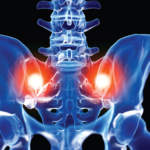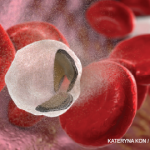“We are right in the vast majority of cases,” says Dr. Weiss. “We just want to be right in all of the cases.”
SI joint inflammation is just one cause of low back pain. Often, physical therapy rather than biologic therapy is indicated. Because rheumatologists are making this important decision based on MRI reports, MRI interpretations must be as accurate as possible.
Solutions
According to Dr. Weiss, a big contributor to this problem has been the lack of materials to familiarize radiologists with the normal maturational changes that occur in the SI joint. However, in July 2021, radiologists published an atlas of pediatric structural changes. The atlas uses the preliminary, updated JAMRIS (Juvenile Idiopathic Arthritis MRI Score) scoring system and is intended to serve as a reference for the assessment of structural lesions in patients with SI joint arthritis.2
Dr. Weiss believes these resources will help familiarize a wider audience with the appearance of the normal pediatric SI joint because “images and examples are invaluable. … I am very optimistic things are going to improve with time and awareness,” she says.
For radiologists and rheumatologists, Dr. Weiss recommends an additional resource: the educational tools created by Care Arthritis, a company focused on the development of new imaging and biomarker technologies to advance personalized medicine for patients with arthritis. Although, according to Dr. Weiss, the Care Arthritis site includes primarily adult images, the free resource also has pediatric images.
Lara C. Pullen, PhD, is a medical writer based in the Chicago area.
References
- Weiss PF, Brandon TG, Bohnsack J, et al. Variability in interpretation of magnetic resonance imaging of the pediatric sacroiliac joint. Arthritis Care Res (Hoboken). 2021 Jun;73(6):841–848.
- N Herregods, WP Maksymowych, L Jans, et al. Atlas of MRI findings of sacroiliitis in pediatric sacroiliac joints to accompany the updated preliminary OMERACT pediatric JAMRIS (Juvenile Idiopathic Arthritis MRI Score) scoring system: Part II: Structural damage lesions. Semin Arthritis Rheum. 2021 Oct;51(5):1099–1107.

